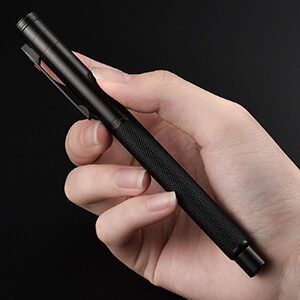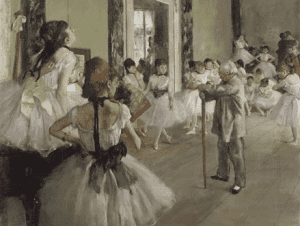(Skip to bullet points (best for students))

Born: 1955
Summary of Jeff Koons
Koons appropriates advertising campaigns and consumer products alike, drawing inspiration from ordinary objects like as children’s toys, cartoon characters, porcelain figurines, and party decorations. In doing so, he starts a conversation on the importance of material items in our lives and society’s overall materialism. Many of his pieces appear to be inexpensive, yet they are not, a brilliant inversion of economic logic that has led to his commercial success. Rather than upsetting art connoisseurs, Koons has encouraged prominent collectors to reconsider their definitions of good art. This marketing technique has paid off handsomely, with his work fetching some of the highest prices art as a living artist.
In the 1980s, Koons’ interest in everyday things drew in many who felt shut out by the art world’s elitism, making him a popular and influential cultural figure. Despite his consumer-oriented references, he continues to push people and “create work that doesn’t make viewers feel they’re being spoken down to” Surprisingly, his love of the everyday has won him over even the most sophisticated and allegedly intellectual audiences. Collectors and museums who collect Koons demonstrate that they can laugh at themselves.
Many of Koons’ works use mirrors and highly polished surfaces, which he like for their perfect quality as well as the fact that they allow the observer to see oneself in the artwork. As a result, the spectator becomes a part of the work, and their shifting reflection affects how they interact with it, making it a highly personal experience.
Although Koons’ work is meticulously conceived, it is built, painted, or fabricated at his workshop by a huge team of people who often produce numerous copies of the same item. Koons raises concerns about authenticity and what it means to be an artist by outsourcing the actual creation of his work.
Koons’ work is associated with a variety of art styles, although he is most closely associated with Pop Art and artists like Andy Warhol. There are also striking connections with Marcel Duchamp, the originator of the readymade. Koons, like the French artist who presented found things such as a urinal, bottle rack, and bicycle wheel as art, reinterprets common objects in an aesthetic way.
Life of Jeff Koons
Henry and Gloria Koons raised Koons in York, Pennsylvania. His mother was a seamstress and his father was a furniture trader who also worked as an interior designer and decorator. He began producing copies of Old Master paintings at the age of eight, which he signed ‘Jeffrey Koons’ and sold in his father’s business. He was enthralled with Salvador Dal as a young adolescent. He contacted the hotel where Dali was staying in New York City, eager to see his hero, and was put through. Dali offered to see Koons, and the two went to the Knoedler Gallery together to see his work.
In 1974, Koons visited the Whitney Museum of American Art in New York City to see an exhibition by Jim Nutt, a founding member of the Chicago Imagists, a 1960s Chicago Surrealist movement. The show was a turning point in Koons’ career, and on the strength of it, he moved to Chicago to work with Nutt and other Imagist instructors, including Karl Wirsum and Ed Paschke. Both Wirsum and Nutt were members of The Hairy Who, a group noted for its colourful, often grotesque paintings influenced by consumer society. Following a year of studies in Chicago, Koons went to the Maryland Institute College of Art, where he received his BFA in 1976.
Koons went to Manhattan in 1977 after graduating from college and started a job selling memberships at the Museum of Modern Art (a job he has said that he hugely excelled at). He interacted with David Salle and Julian Schnabel, significantly older artists with a New York reputation, in New York City, where he investigated the New Wave and Punk music scenes at the now renowned clubs CBGB and the Mudd Club. He also became active in the East Village Art movement, a subculture of artists that reject conventional art and favour counter-culture aesthetics such as graffiti.
This resulted in a thriving melting pot of new ideas that influenced music, poetry, literature, and the visual arts, as well as providing a platform for artists such as Peter Halley, Joan Wallace, and Ashley Bickerton. New trends such as Neo-Expressionism, Neo-Geo, and Neo-Pop sprang from East Village Art, all of which influenced Koons’ work. It was at this time that Koons began making his inflatable sculptures, an idea that would become a trademark of his oeuvre, inspired by the culture of creation and experimentation surrounding him.
Koons left MoMA in 1980 and began marketing stocks and mutual funds for First Investors Corporation and, later, Smith-Barney, using his sales experience. This helped to fund the creation of The New. He presented this series in the New Museum on 14th Street in Lower Manhattan the same year. Vacuum cleaners were displayed in lighted plexiglass cases in the exhibition, which was meant to seem like a showroom. He began working on The Equilibrium series in 1983, which featured basketballs floating in tanks of distilled water with posters of basketball players.
These works may be seen as part of East Village Art, namely the Neo-Geo trend, which employed artworks to criticise and mock consumer society and the commercialization of the modern art world. For these early pieces, Koons earned critical praise, and barely three years after his public debut, renowned critic Roberta Smith dubbed him “of the strangest and most unique of contemporary artists”
Famous Art by Jeff Koons
Balloon Flower (Red)
1995-1999

To date, Koons’ most well-known works are his towering sculptures based on balloon animals. This one is more than 10 feet tall and weighs more than a tonne. Its gleaming appearance is meant to “manipulate and seduce” according to the artist. Unlike the cheap rubber it imitates, Balloon Flower’s surface recalls the gleam of precious metals. Because it’s metal, the flawless, shiny surface and completely hidden joints urge us to marvel at the items’ total symmetry and beauty. The entire composition fades as the spectator gets closer, and the observer is presented with his or her own warped, flawed picture.
Hulk (Organ)
2004-2014

Hulk (Organ) is one of a series of Hulk Elvis pieces in which Koons juxtaposes sculptures of the cartoon character The Incredible Hulk with odd objects like as children’s toys, a replica of the Liberty Bell, and a wheelbarrow full of real flowers. As a result, the works play with gender stereotypes by mixing the testosterone-fueled Hulk with more traditionally feminine motifs. In doing so, Koons aims to strike a balance between the Hulk’s conventional masculinity and a more gender-neutral portrayal.
Seated Ballerina
2017

Seated Ballerina is part of Koons’ Antiquity series, which combines ancient and modern images and methods. The sculpture was intended to be a contemporary version of the mythological Roman Goddess Venus, according to Koons. According to Koons, this is a prevalent theme in ancient and classical art “It’s possible that you’re looking at a Venus of Willendorf or one of the earliest Venuses. It’s all about the aesthetics, as well as a sense of introspection and comfort.” The dancer’s stance is evocative of a classic representation of Venus, grounding the figure in historical precedent while yet being obviously modern, combining past and present.
BULLET POINTED (SUMMARISED)
Best for Students and a Huge Time Saver
- Koons appropriates advertising campaigns and consumer products alike, drawing inspiration from ordinary objects like as children’s toys, cartoon characters, porcelain figurines, and party decorations.
- In doing so, he starts a conversation on the importance of material items in our lives and society’s overall materialism.
- Rather than upsetting art connoisseurs, Koons has encouraged prominent collectors to reconsider their definitions of good art.
- This marketing technique has paid off handsomely, with his work fetching some of the highest prices art as a living artist.
- In the 1980s, Koons’ interest in everyday things drew in many who felt shut out by the art world’s elitism, making him a popular and influential cultural figure.
- Despite his consumer-oriented references, he continues to push people and “create work that doesn’t make viewers feel they’re being spoken down to” Surprisingly, his love of the everyday has won him over even the most sophisticated and allegedly intellectual audiences.
- Collectors and museums who collect Koons demonstrate that they can laugh at themselves.
- As a result, the spectator becomes a part of the work, and their shifting reflection affects how they interact with it, making it a highly personal experience.
- Koons’ work is associated with a variety of art styles, although he is most closely associated with Pop Art and artists like Andy Warhol.
- There are also striking connections with Marcel Duchamp, the originator of the readymade.
Information Citations
En.wikipedia.org, https://en.wikipedia.org/.
Recommend0 recommendationsPublished in Artists







Responses